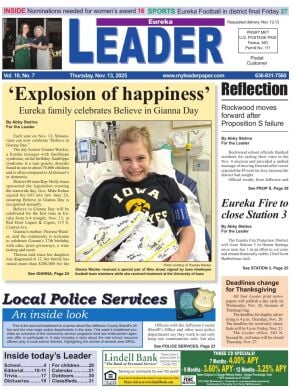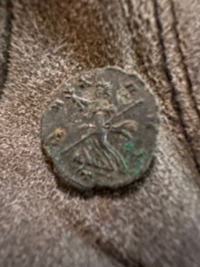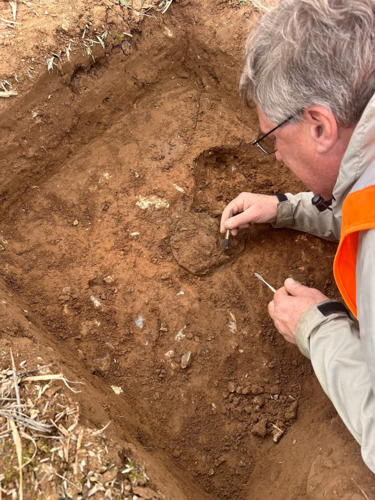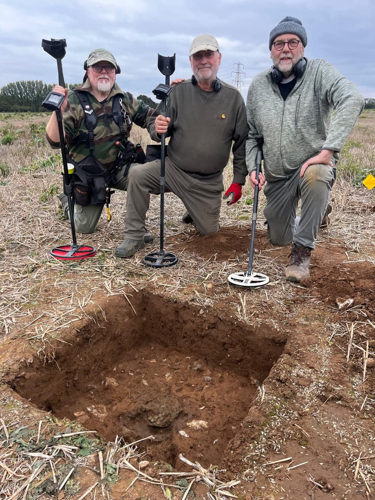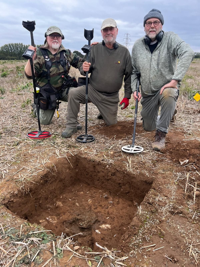
(Steve Dean via SWNS)
James Gamble
A keen metal detectorist has hit the jackpot of an ancient Roman coin hoard - 20 years after he first took up his hobby.
Steve Dean, along with friends Glenn Church and Ed Denovan, discovered the valuable hoard of around 400 coins in a farmer's field near Maidstone, Kent.
The coins - believed to be around 1,800 years old - are now being looked at by experts at the British Museum, who will put a price on their finding.
For Dean, a 68-year-old who works as part of the security team at the University of Kent, the discovery marks his 'bucket list' moment in over two decades of detectoring.
Church and Denovan - 69 and 70 respectively - have also never encountered a treasure trove of this kind, despite the former having started detectoring way back in the 1970s.
"It was a very unexpected find," Dean, a grandfather of eight, said. "It was a first guard for all of us. Only a few hoards are found each year and most detectorists never find one.
"It's a bucket list find for most detectorists.

(Steve Dean via SWNS)
"There is nothing remarkable about the field we found them in."
The three friends found the hoard in a farmer's field near Maidstone, though they are unable to reveal the precise location to ward off 'nighthawkers' - rogue detectorists trying to make a profit from finds.
The friends found a few coins scattered around the field after an hour's work.
They kept finding more and more, before discovering a large number of coins cradled in a broken pot around 14 inches below the ground.
The scattered hoard is believed to have been spread by the pot being broken during ploughing on the field, spreading the coins around.
"This pot was the base of the original hoard, placed in the ground some 1,800 years ago," Dean, who also worked in the police for 32 years, explained.
"At this point, realizing that what we had discovered was historically important, we stopped digging and called the professionals in."

(Steve Dean via SWNS)
Dr. Andrew Richardson and Paul-Samuel Armour, archaeologists from Isle Heritage, arrived within the hour to excavate the coins, before taking them to be studied in further detail at the British Museum.
"The hoard shows the Romans were here 1,800 years ago," Dean continued.
"There must have been something in the area, something must have drawn them there.
"But the farmer has already sown the field, so it will be next year before we get the opportunity to have another look."
Dean, from Faversham in Kent, said it could take as long as two years for the British Museum to tell them how much the coins are worth.
At that point, the Museum will have 'first dibs' to purchase the hoard.
The money from the sale will be split 50-50 between the three detectorists and the farmer who owns the field they were found in.

